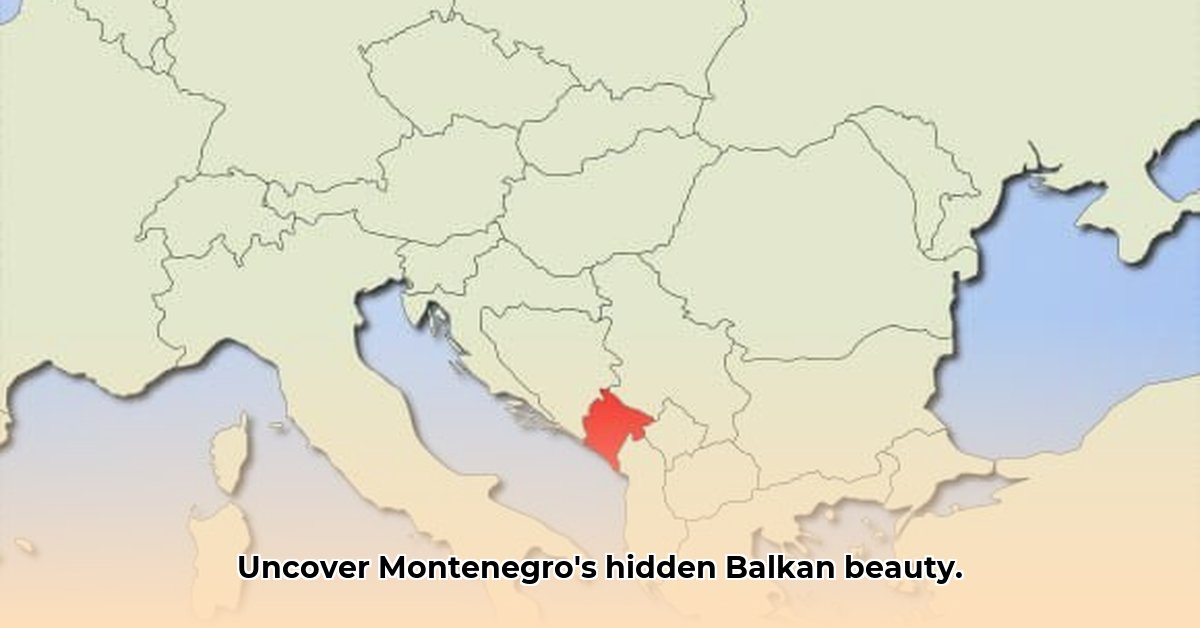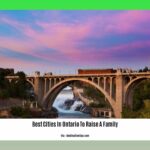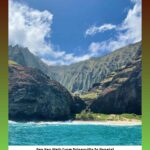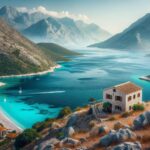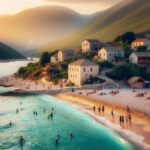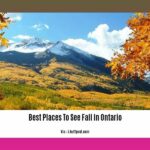Have you ever wondered about Montenegro? It’s a captivating country nestled in the Balkans, where dramatic mountains meet a stunning coastline. This is more than just a geography lesson; it’s a journey into a land shaped by its remarkable landscape. We’ll pinpoint the location of this Balkan gem and explore its breathtaking scenery, from the towering Dinaric Alps to the mesmerizing Bay of Kotor. But it’s not just about picturesque views; we’ll delve into how these mountains and the coastline have influenced Montenegro’s history, culture, and its place in the world. Prepare to uncover this hidden treasure and discover what makes it so special. For context on the region, check out this map of Europe.
Geographical Location and Balkan Charm
Montenegro! The name itself evokes adventure, doesn’t it? It conjures images of majestic mountains descending into a sparkling sea. But let’s get practical: Where exactly is this intriguing country? Let’s explore its geography and unearth its hidden charms.
Imagine a country packed with incredible variety within a relatively small area – roughly the size of Connecticut. That’s Montenegro. It’s situated in the heart of the Balkans, bordered by Croatia, Bosnia and Herzegovina, Serbia, Kosovo, and Albania. Think of it as a perfectly positioned crossroads, a meeting point of cultures and landscapes with a rich history dating back centuries.
A Land of Stunning Contrasts: Mountains, Coast, and Lakes
Montenegro is a land of dramatic contrasts. One moment, you’re admiring its captivating coastline, punctuated by the breathtaking Bay of Kotor – a natural wonder that could be straight out of a fairy tale. This deep, winding inlet, resembling a fjord, is a true spectacle. Then, turning inland, you’re confronted by the majestic Dinaric Alps, imposing mountains that dominate the landscape. And to top it off, there’s Lake Skadar, a vast and beautiful lake shared with Albania, a tranquil jewel reflecting the sky. This incredible diversity shapes everything about Montenegro – its culture, its economy, and even the way its people live.
The Bay of Kotor isn’t just beautiful; it’s a unique ecosystem teeming with marine life, a submerged river canyon carved by nature over millennia. Its biodiversity is remarkable, and the charming towns clinging to its shores add to its allure. However, the dramatic cliffs and narrow plains also mean that arable land is scarce, posing challenges that Montenegrins have consistently overcome with resourcefulness.
The Dinaric Alps: A Backdrop of Epic Proportions
The Dinaric Alps form Montenegro’s backbone – a vast mountain range stretching across the country. These ancient mountains, formed by massive geological forces over millions of years, offer both challenges and opportunities. They complicate road and railway construction and pose difficulties for infrastructure development, such as providing electricity to remote villages. Yet, their stunning beauty attracts tourists from around the world, driving a growing eco-tourism sector. Moreover, the mountains are rich in natural resources, though their extraction must be managed sustainably. Earthquakes are also a reality in this seismically active region, necessitating resilient construction practices.
Lake Skadar: A Natural Treasure
Lake Skadar, one of Europe’s largest lakes, is a shared treasure with Albania. It’s a haven for diverse wildlife – birds, fish, and countless other species – and a crucial resource for agriculture. It’s also a major attraction for bird watchers globally. This vast lake, nestled among the mountains, exudes tranquility and beauty, creating a stunning setting. Interestingly, the lake’s exact size varies depending on the source, reflecting the difficulty of accurately measuring such a dynamic body of water. Its importance to both Montenegro and Albania underscores the need for effective cross-border environmental cooperation.
How Geography Shapes Montenegrin Life
Montenegro’s geography has profoundly influenced its people and their way of life. Historically, the mountains fostered isolated communities, resulting in unique local traditions and dialects. While tourism is a significant economic driver, it’s crucial to manage it sustainably to protect the remarkable natural environment that draws visitors. Constructing infrastructure remains an ongoing challenge, requiring innovative solutions and considerable investment. Farming is difficult in the mountainous terrain, necessitating creative approaches to ensure food security.
Facing the Future: Challenges and Opportunities
To understand Montenegro fully, we must look beyond its coordinates on a map and recognize how its unique geography shapes its future. Let’s examine key challenges and opportunities:
| Stakeholder Group | Short-Term Goals (Next Year) | Long-Term Vision (3-5 Years) |
|---|---|---|
| Tourism Sector | Improve access to remote areas; implement targeted marketing campaigns; manage crowds. | Develop eco-friendly tourism; invest in sustainable accommodations; diversify tourism offerings. |
| Infrastructure Developers | Upgrade roads and railways in mountainous regions; enhance regional connectivity. | Build resilient infrastructure capable of withstanding natural disasters; promote green building practices. |
| Agricultural Sector | Improve irrigation systems; promote drought-resistant crops; support local farmers. | Modernize farming techniques; diversify crop production; enhance agricultural sustainability. |
| Environmental Agencies | Strengthen waste management; protect biodiversity; implement conservation projects. | Establish comprehensive environmental monitoring; address the impact of development; promote eco-awareness. |
| Government | Secure EU funding; support sustainable development; promote international cooperation. | Integrate geography into national planning; effectively address climate change; promote regional stability. |
Montenegro’s geography is more than just mountains, coastlines, and lakes; it’s the essence of the nation – a testament to its resilience, rich culture, and captivating beauty. So, where is Montenegro? It’s a place where past and present converge, where nature’s majesty inspires and poses challenges in equal measure. It’s a destination well worth discovering.
How Does Montenegro’s Karst Topography Impact Agricultural Practices?
Montenegro, a Balkan treasure between the Adriatic Sea and the Dinaric Alps, offers a breathtaking landscape. This beauty, however, presents unique challenges, particularly for its agricultural sector. The country’s dominant feature—its karst topography—significantly shapes farming practices. But what is karst? It’s a landscape formed by the dissolving of soluble rocks like limestone, resulting in sinkholes, caves, and underground drainage systems. This isn’t just picturesque scenery; it fundamentally changes how Montenegrins farm their land.
Navigating Water Scarcity and Sustainable Agriculture
Imagine trying to cultivate crops where water vanishes underground. That’s the reality for many Montenegrin farmers. How does Montenegro’s karst topography impact agricultural practices? Primarily, through water scarcity. The porous karst rock allows rainwater to drain quickly, leaving topsoil dry. This makes traditional irrigation inefficient, forcing farmers to develop innovative solutions or adapt their crops to drought conditions. Olive groves and vineyards, adapted to drier climates, thrive in some regions, while others rely on carefully maintained terraced fields to capture and conserve rainfall. It’s estimated that approximately 65-70% of Montenegro is covered by karst landscapes which greatly impacts water availability.
Challenges of Cultivating the Karst Terrain
The rocky, often thin, soil of the karst also limits arable land. It’s not conducive to large-scale, intensive farming. Instead, many Montenegrins engage in livestock farming, particularly sheep and goats, which are well-suited to grazing on the sparse vegetation. This creates a unique agricultural landscape where rugged mountains support a surprisingly resilient agricultural economy, albeit heavily shaped by the terrain. The challenges are undeniable, though; land erosion is a constant threat on these steep slopes, further impacting productivity.
Adapting to the Terrain: Traditional Wisdom Meets Modern Solutions
Montenegrin farmers have developed ingenious methods to overcome the limitations of their environment. Terraced farming, a centuries-old hallmark of the country’s landscape, enables efficient water management and prevents soil erosion on steep slopes. This practice demonstrates a deep understanding of the land, passed down through generations. While they use local knowledge, they also explore modern technologies for sustainable agriculture that address water scarcity and other challenges.
Looking Ahead: Sustainable Agriculture in a Karst Landscape
The future of Montenegrin agriculture depends on sustainable practices. Climate change adds further strain, increasing the risk of droughts and unpredictable weather patterns. Investing in water-efficient irrigation systems, promoting organic farming methods, and supporting crop and livestock diversification are crucial steps. The country’s unique agricultural heritage can be a strength, provided that suitable strategies are implemented to ensure its long-term viability. This involves fostering innovation, protecting traditional techniques, and adapting to the realities of a changing climate.
Key Takeaways:
- Montenegro’s karst topography significantly impacts agricultural practices due to water scarcity and limited arable land.
- Traditional farming methods, such as terraced farming, are adapted to the region’s unique conditions.
- Climate change poses an additional challenge, requiring sustainable agricultural solutions.
- Specific crops (olives, grapes) and livestock (sheep, goats) adapted to the karst environment offer opportunities.
- The future of Montenegrin agriculture requires balancing heritage preservation and embracing innovation.
- Unlock Umami’s Savory Secret: The Science of Deliciousness - July 30, 2025
- Discover How the Columbian Exchange Reshaped Global Cuisine - July 30, 2025
- Unlocking the Placebo Effect: How Your Brain Can Heal Your Body: New Insights - July 30, 2025
